
Stigmaria
and stumps of clubmoss trees I II
|
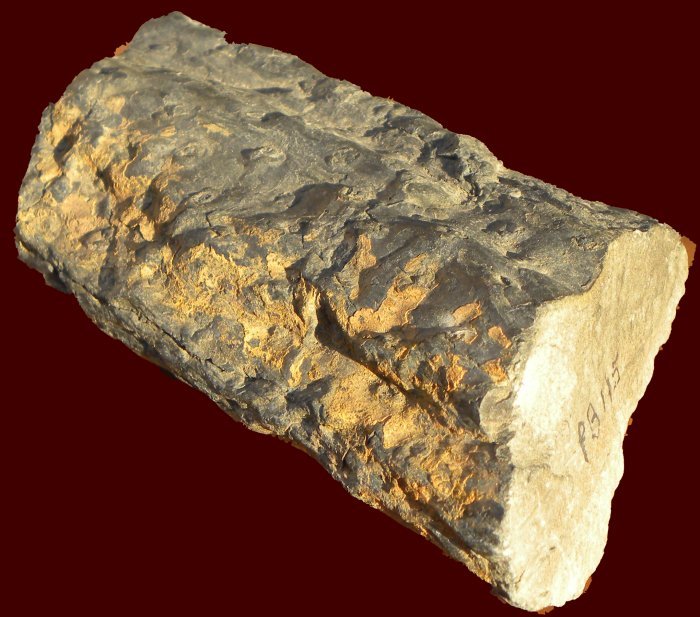 Fig. 2. Worn off piece of Stigmaria from the Piesberg. Width of the picture 15 cm. Westphalian D. |
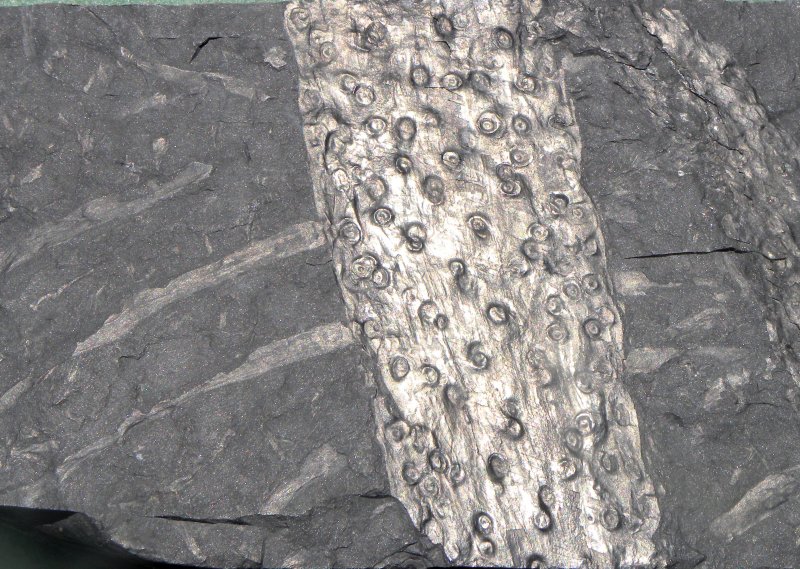 Fig. 3. Stigmaria with clear scars and some appendices attached. Ibbenbüren, Westfalian C. Height of the photo 8 cm. |
It
is remarkable that the many, often very
different, club moss trees all have the same root system. For example,
Lepidodendron and Lepidophloios have trunks and/or
side branches that are
forked many times, while the trunks of Sigillaria only branched twice at
the most. And Lepidodendron had a
real crown, while the leaves of Sigillaria
formed
only a kind of giant shaving brush.
The
appendices were 5 - 10 mm thick and they
branched sporadically. Whether the subterranean axes were real roots
similar to
those of today's trees is debatable. This is because the appendices are
spirally attached to the axes, just like leaves. This indicates that
those
splitting axes were in fact a kind of adapted side branches and that
the roots
were adapted leaves. The fact that they were shed over time is also a
characteristic they have in common with leaves.
Habitat
The club moss trees were adapted to moist to very
wet soils. In places with clayey soils the water cannot seep away and
such
areas were ideal for these trees. The forests they formed were often
very
uniform without significant undergrowth. Only in drier places in the
often very
extensive marsh forests cordaits and herbaceous plants grew, such as
sphenophylls and perhaps ferns,
Many
generations of club moss trees formed thick
layers of peat, which were compressed by the pressure of newly formed
layers.
The formation of peat required that the subsidence of the soil kept
pace with
the formation of new peat. As the subsidence accelerated, it drowned
the peat
including living vegetation and covered it with a layer of sediment of
mud
and/or sand. Further carbonisation of the peat into lignite, coal and
anthracite occurred as a result of temperature increase. The anthracite
stage
was only reached when the layers ended up at great depths or when magma
rose,
which made the temperature very high. The latter may have been the case
at the
Piesberg coal beds.
The
stiffness of the club moss trunks came mainly from
the outer layer, which consisted of thick-walled cells. The proportion
of wood
in the trunks was low, in contrast to the trunks of today's deciduous
and
coniferous trees. It is therefore assumed that club moss trees had a
short
lifespan (10 to 15 years) and that they grew (and decayed) rapidly.
Stigmaria is mainly found in the root layer: that is
the layer below the coal layer, wheras the plant layer is above the coal layer.
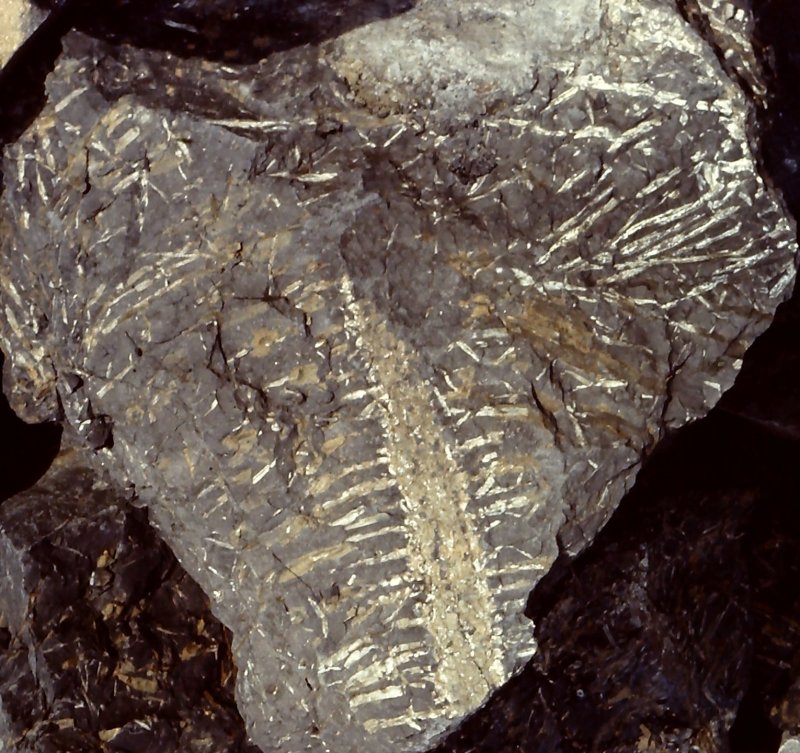 Fig. 4. Large block from the root layer with Stigmaria with attached appendices. Piesberg, Westphalian D |
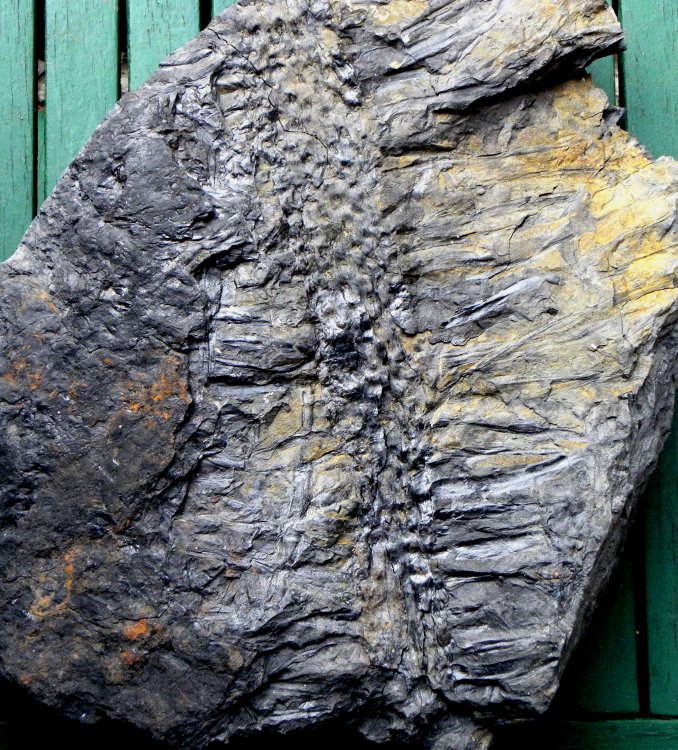 Fig. 5. Stigmaria with attached appendices from a root layer of the Piesberg. Westphalian D. Height of the photo 35 cm |
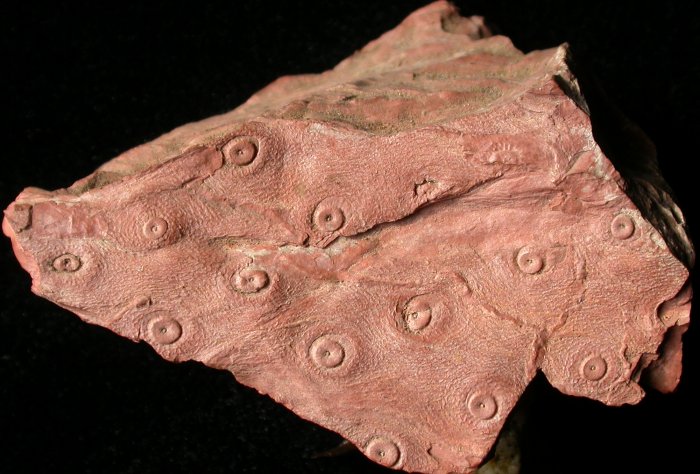 Fig. 6. Stigmaria rugulosa of Duisburg-Hamborn (D), Westfalian A. Width of the photo 7 cm. Collection and photo A. Reinink |
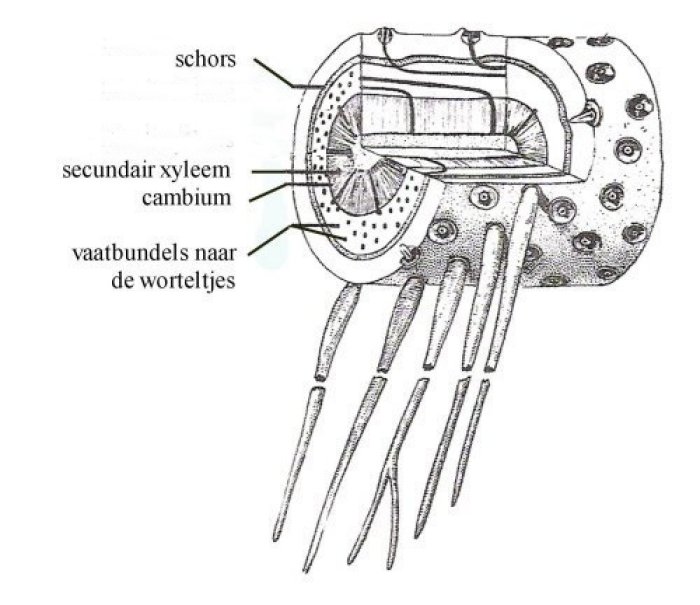 Fig. 7. Structure of Stigmaria. After Stewart 1947 |
Figures
4 and 5 are of large pieces of Stigmaria ficoides from the root layer with the
appendices lying in the split plane.
Stigmaria
ficoides can be found all over the world. In addition, some other species have
been described, such as Stigmaria rugulosa which is shown in picture 6. Most
probably, however, these are preservational forms of S. ficoides.
Structure
The
internal structure of the root carriers can be seen in figure 7. There is a
central cavity surrounded by secondary wood, formed by a one-sided cambium.
This is a layer of cells that forms wood to one side, the inside. It is
surrounded by a three-layered bark. The anatomical structure has not been
preserved in compression fossils. In some silicified Stigmaria's the structure has been
fossilized.
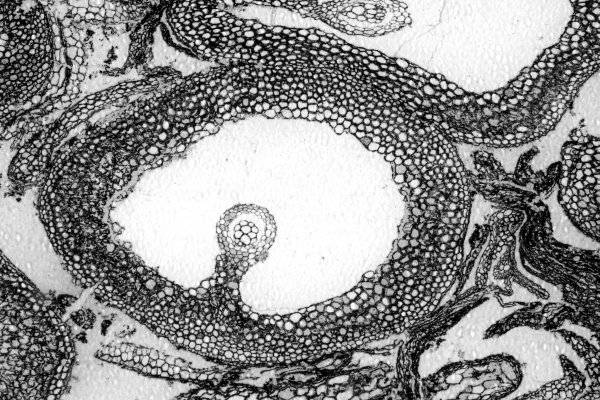 Fig. 8. Rootlet of Sigillaria: the vascular bundle
is connected to the bark. Photo: H. Kerp. |
That is also the case in coal balls.
These are
concretions of magnesium or calcium carbonate formed in the peat stage
in which
the plant residues are preserved up to cellular level. They occur in
South
Limburg, Belgium, Germany and England (Lancashire/Yorkshire) and a lot
of
information has been extracted using various techniques. Figures 9 and
10 are from slides purchased by the University of Groningen in England
in
1922. On the left is a picture of the secondary wood of a very thin
axis of
Stigmaria. The wood is divided into sectors by a number of wood rays, of which
the cells have disappeared here. Compare also picture 7.
Figure 9 is a cross-section of seven
appendices. Their narrow vascular bundles are in the central cavity.
Although all club moss trees have the same root
system, there is a small difference between trees from the Sigillaria-group and
the non-Sigillaria-group. In Sigillaria the central vascular bundle is
connected to the bark, while this is not the case with Lepidodendron and its
relatives. Compare figures 8 and 10. This difference can only be seen in
material in coal balls and silifications.
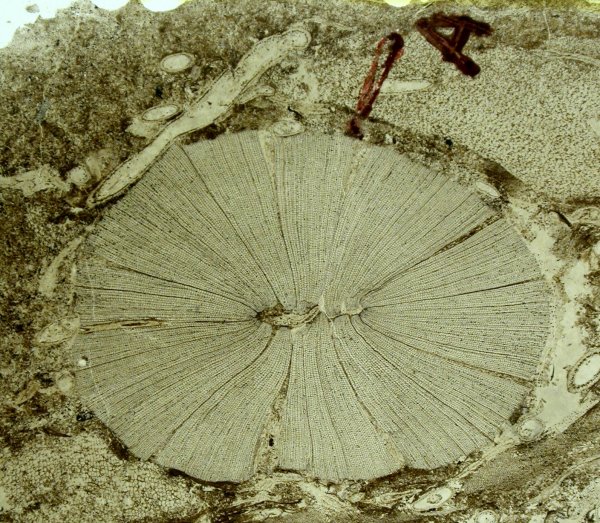 Fig. 9. Secondary wood of a young Stigmaria
with some sections of appendices lying around it. Width of the
photo 2,8 cm. Coal ball from Yorkshire, Upper Carboniferous.
|
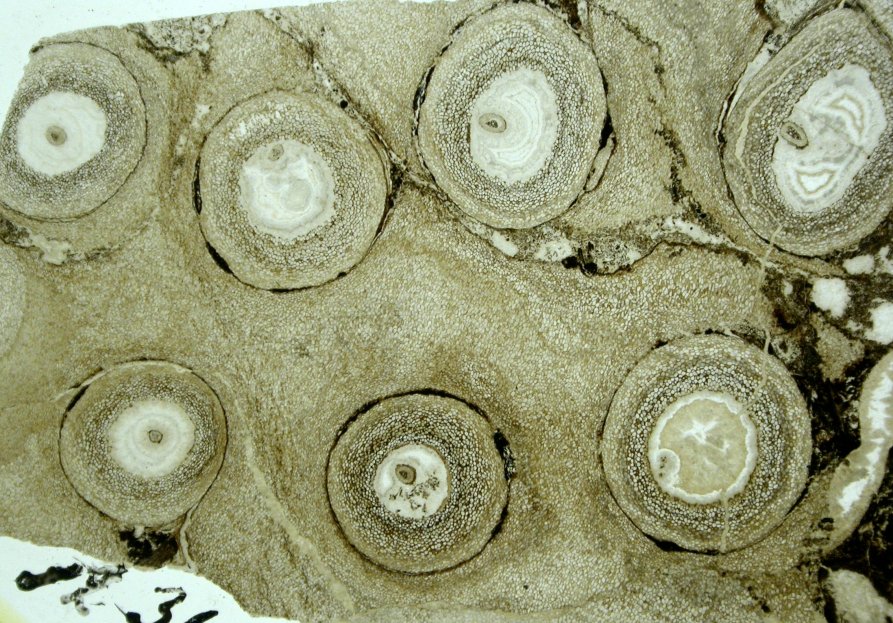 Fig. 10. Sections of appendices. The vascular bundle lies in the central cavity. Width of the photo 4,7 cm. Coal ball from Yorkshire, Upper Carboniferous |